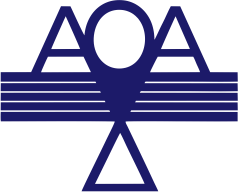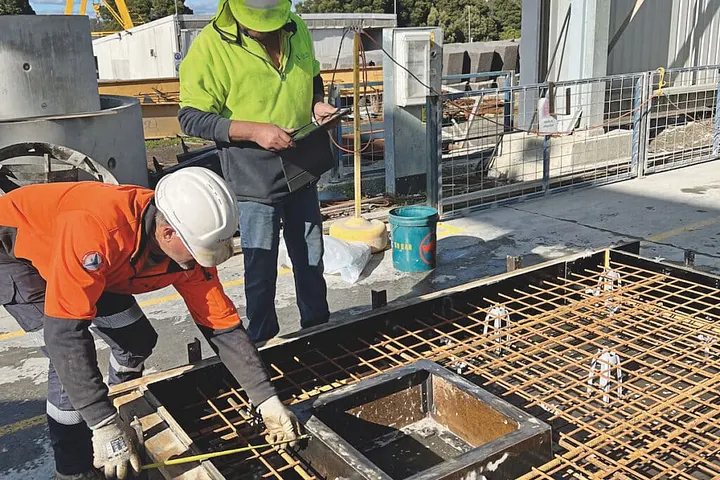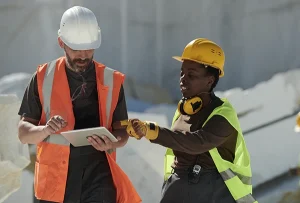Regulatory compliance is essential for the success and safety of every construction project and one of the most reliable ways to meet these standards is through clear and well-documented testing protocols and inspection procedures.
These protocols ensure that materials, workmanship, and engineering processes meet expected standards. Without them, projects risk delays, penalties, and quality failures long after completion.
This article explores the importance of inspection and testing protocols for meeting compliance requirements, and how to implement them effectively from start to finish.
Why Testing Protocols Are Essential
A testing protocol outlines how to check specific materials, installations, and structural elements to confirm they meet approved engineering standards and building codes. These protocols act as a quality assurance roadmap, providing guidance on what to test, how to test, when to test, and what results are acceptable.
Regulatory bodies such as the Council for the Regulation of Engineering in Nigeria (COREN), the Standards Organisation of Nigeria (SON), and the Federal Ministry of Works often require specific inspections and documented tests before a project can proceed or receive final approvals.
Following these standards protects lives, prevents costly failures, and ensures that infrastructure holds up under long-term usage. A well-structured testing process helps the team make confident, data-based decisions rather than relying on guesswork.
Key Components of a Testing Protocol
A strong testing process is built on these fundamental parts:
1. Identification of What Needs to Be Tested
Start by determining what components and materials require testing. This is usually guided by project type, soil conditions, structural requirements, and the scope of work. For example, a road construction project may need frequent compaction testing, while a high-rise structure will require detailed concrete and steel reinforcement tests.
Each test should align with approved engineering specifications, project drawings, and national codes.
2. Using Recognised Testing Standards
Testing methods must follow recognised standards to be valid. These may include Nigerian Industrial Standards (NIS), British Standards (BS), or ASTM International methods. For example, concrete testing may refer to BS 1881, while soil testing could use ASTM D698 or equivalent NIS procedures.
Clearly defining the methodology ensures that results are reliable and can stand up to review during audits or external inspections.
3. Assigning Responsibilities Clearly
The protocol should state who is responsible for each test or inspection. This could be a site engineer, laboratory technician, or third-party consultant. For tests that require independent verification, it’s best to engage an accredited materials testing lab certified by SON or supervised by a COREN-licensed professional.
Clear roles reduce confusion and increase accountability on-site.
4. Setting a Testing Schedule
Testing must happen at the right time to be useful. Some assessments occur before work begins, like geotechnical tests on soil. Others are done during execution, like concrete slump or compaction tests. Final inspections are conducted before handover to ensure everything has been installed correctly and is functioning as intended.
The testing protocol should include a timeline, frequency, and acceptable thresholds for each activity.
5. Maintaining Proper Records
Documenting each inspection and test is crucial. Every result, observation, and recommendation should be logged in an organised manner. This record becomes part of the quality control file and may be requested by regulators or clients.
Digital documentation tools can simplify this process and reduce the chance of errors or missing data.
Common Inspection and Testing Activities
While the exact activities vary based on project size and scope, some of the most common include:
- Soil testing: For bearing capacity and moisture content
- Concrete cube testing: To check compressive strength
- Steel inspection: For size, type, and rust resistance
- Waterproofing checks: Especially in foundations and roofs
- Electrical and plumbing system testing: Pressure and continuity tests
- Structural inspections: To verify alignment and integrity
All these activities, when carried out properly, ensure the project stays in line with regulatory standards and can proceed smoothly without setbacks.
Having protocols in place is one thing, but enforcing them is another. Supervision by experienced engineers or project managers ensures that protocols are followed precisely. Routine site visits, random checks, and contractor training sessions all help maintain quality throughout the construction lifecycle.
Contact AOA Geo-Net to book professionsal support with engineering inspections.




